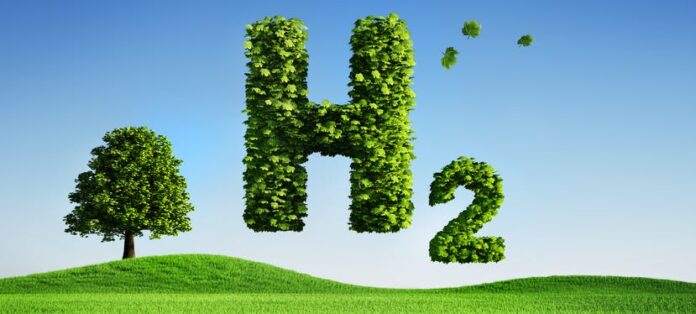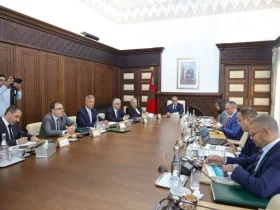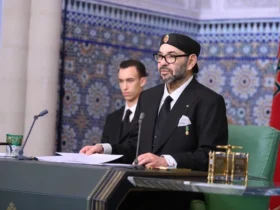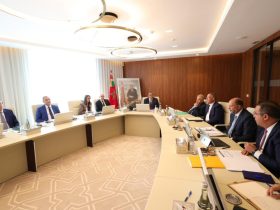As part of a regional dynamic, the Kingdom of Morocco is firmly committed to advancing its energy transition by reducing greenhouse gas emissions while contributing to the decarbonization efforts of partner nations. This ambitious drive is fueled by Morocco’s remarkable potential in renewable energies, honed through its expertise gained over the last decade in diverse sectors. The nation’s concerted efforts are now converging towards the establishment of an economic and industrial sector centered around green hydrogen and its derivatives, aligning seamlessly with this transformative trajectory.
The exploration of Power-To-X (PtX) opportunities began in 2018 when German Fraunhofer Institutes IMWS, IGB, and ISI conducted two simultaneous studies. The findings were presented in February 2019 during a workshop organized by the Institut de recherche en énergies renouvelables et énergies nouvelles (IRESEN) and the Moroccan-German energy partnership PAREMA, under the guidance of the Ministry of Energy, Mines, and Environment. These studies suggested that by 2030, Morocco could capture a substantial share of the global PtX demand, estimated at 2-4%.
In response to the presented results, a national commission was created to develop a “Power-To-X” roadmap. The commission’s inaugural meeting, held in May 2019, saw active participation from key ministries and prominent organizations, including the Office national de l’électricité et de l’eau potable, MASEN, ONHYM, and OCP Group. The meeting not only deliberated on the preliminary studies’ outcomes but also explored the latest advancements in PtX technology and its practical applications such as hydrogen production, energy storage, direct hydrogen injection into the gas grid, electric mobility, and the production of green molecules like ammonia and methanol.
In June 2019, the International Energy Agency (IEA) published a study report titled “The Future of Hydrogen,” recognizing Morocco among the countries where electrolytic hydrogen demonstrated near cost-competitiveness with natural gas and coal for ammonia and methanol production. This advantage stemmed from Morocco’s status as one of the nations with the most affordable renewable electricity. Consequently, foreign investment prospects in Morocco’s PtX sector were anticipated to increase, despite its distance from current demand centers.
Building on this momentum, IRESEN and its partners, including the Green Energy Park, the OCP Group, and the Université Mohammed VI Polytechnique (UM6P), embarked on launching the Power-to-X dynamic. They announced the creation of dedicated platforms for green hydrogen and ammonia production. Concurrently, a conference on “Solar Hydrogen” was organized by the Amadeus Institute and partners, while the German organization Dii Desert Energy released the “North Africa – Europe Hydrogen Manifesto.”
Substantial progress occurred in 2020, with the signing of a Moroccan-German agreement on June 10, 2020, to develop the green hydrogen production sector and establish research and investment projects involving this resource. The Economic, Social, and Environmental Council (CESE) also published a report titled “Accelerating the Energy Transition to Put Morocco on the Path to Green Growth,” recommending Morocco to embrace the hydrogen revolution (Power-to-X) due to its comparative advantages. The report also emphasized the potential of large-scale industrial projects revolving around the Power-to-X sector linked to hydrogen.
Notably, 2020 culminated with the organization of the first edition of the World Power-to-X Summit by IRESEN and UM6P. This virtual event acted as a regional platform, gathering government representatives, industry leaders, and experts from national and international organizations to discuss green hydrogen and its applications.
In 2021, Morocco’s green hydrogen endeavors gained further traction, marked by a significant announcement of a connection between the port of Tangier Med and the German port of Hamburg. A letter of intent regarding the export of green hydrogen from Morocco to Germany showcased the nation’s burgeoning role in the global hydrogen market. Additionally, a declaration of cooperation on green hydrogen was signed between Morocco’s Minister of Energy, Mines, and the Environment and Portugal’s Minister of the Environment and Climate Action in Rabat. The partnership aimed to promote the clean energy sector and align green hydrogen priorities with decarbonization strategies linked to the Paris Agreement.
March 2021 witnessed the formation of the “GreenH2 Morocco” cluster, a national entity focusing on applied research, innovation, and industry in the field of green hydrogen. The cluster was chaired by the Moroccan Minister of Energy, Mines, and the Environment and the Minister of Industry, Trade, and the Green and Digital Economy.
Furthermore, in 2022, the International Renewable Energy Agency (IRENA) positioned Morocco among the countries most likely to become green hydrogen exporters in its report “Geopolitics of the Energy Transformation: The Hydrogen Factor.” A Harvard University academic paper on the geopolitics of hydrogen also recognized Morocco, alongside Australia, the United States, and Norway, as “Export Champions” due to their vast renewable energy and water resources, and high infrastructure potential.
Morocco’s unwavering commitment to developing a green hydrogen economy and its growing global significance in the hydrogen sector suggest a promising path towards energy export and environmental sustainability.








